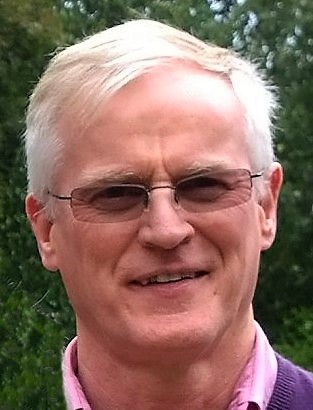
“The X-Factor – a presentation of the all-singing, all-dancing Linux computer operating system and its relationship to OSX, Unix and Microsoft X” by Karl Weibye.
Karl described an alternative world to Microsoft Windows using the Linux OS, saving money, avoiding viruses, giving problem-free computing and encouraging self-reliance. An important criterion is to have confidence in the product!
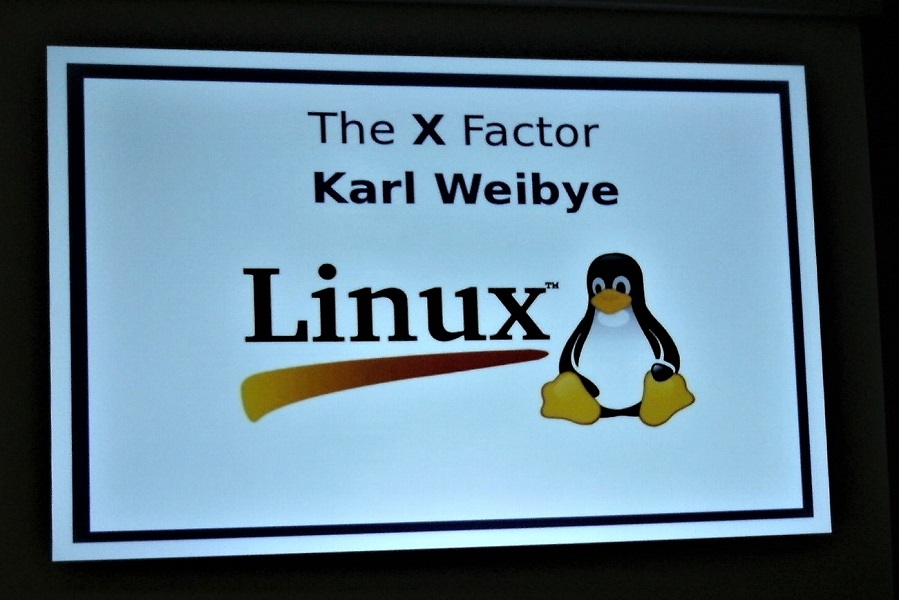
Karl worked in the computer industry for 35 years including running his own company for 20 years supplying PC networks to industry until he retired in 2004. Although a Microsoft Gold Certified Partner for most of his business career, he now works almost exclusively with Linux, in its many flavours.
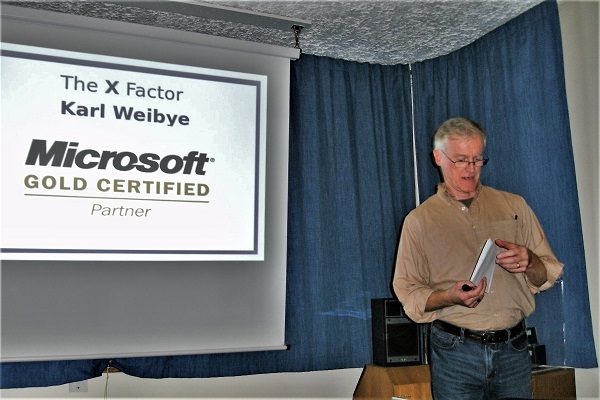
Report (1) by Alan GM3PSP:
The MS Windows operating system generations have evolved by adding more and more ‘stuff’ to the original system without removing anything, with the result that the current version is huge, with users typically using only a small proportion of it. Karl also stated that ‘The Cloud’ memory facility involves putting your material on someone else’s computer! What people want is a simple system. Perhaps one day MS will bring out a totally new Windows OS based on Linux!
Why ‘X’? – because all current systems are based upon the Unix system – including MS Windows, Apple, IBM etc. The Linux Foundation is developed by- and includes all the hardware companies, but is a threat to Microsoft!
Linux is actually the basis of all modern operating systems – modern TV receivers, drones, the International Space Station, super-computers worldwide (500), even the White House!
To illustrate how simple it is to install Linus, Karl showed a very light Samsung Series 9 laptop and a solid-state SSD memory drive, much faster than a typical memory. A (very large) MS Windows operating system is installed at the factory and it Is impossible to move away from it! Apple and some other manufacturers have moved away from Windows.
There are three reasons for moving to Linux:
- It is much smaller – it’s ‘image’ is only 1GB
- It uses a tiny media by today’s standards, only 1TB
- It provides ‘ubuntu’ or freedom.
Dell Is now using an improved version of Linux, also Facebook and Amazon.
Karl gave a demonstration using a Windows-7 laptop, showing that Windows cannot recognise a Linux file system.
It is necessary to have a Linux OS home-pack. A CD disk of the current Linux OS is included in every copy of the Linux magazine but this is slow to load and it is quicker to down load (free) from the internet.
Virus infections spread to every part of a Windows OS, but are limited to only a small compartment in Linux.
Existing hard disk content can be read by the Linux system.
Linux includes the GIMP image processor, as an alternative to Photoshop.
Linux installation: plug a USB memory stick into your computer and use RUFUS to burn the Linux ‘image’, which is only ~2GB, and load this into your computer using ‘Install Linux Mint’.
Linux Is free but some bits are proprietary. It is updated every 6 months. The current version is 19.
The Raspberry-Pi runs Linux, and ‘The Cloud’ is Linux!
Back-up is performed using ‘Rsync’ software.
=====================================================================
Report (2) by Peter GM4DTH:
Karl opened his presentation stating that the ‘X’ in the title was a link between Unix, a proprietary computer operating system, and the many look a like versions with their names also ending in ‘x’. Why is this important? This question was answered by outlining the merits of the best known variant known as ‘Linux’. The most important reasons given were that it is open source and is it available free to users. But first he gave some background to the world of personal computing.
The reliability and efficiency of Linux was contrasted with a leading software company whose products trailed in both these areas. Other weaknesses were highlighted, including the susceptibility to malware degrading and damaging the host computer. With such discrepancies why do so many users not adopt Linux?
The answer was simply the power of big business who invest considerable sums in preserving and consolidating its market position. It also benefits in various ways, including economic, with other companies who provide related commercial products. As long as the user pays it is good business. In addition many support business have grown in this environment all making profits. This background and potential threat to their, and their associates, businesses lead to them running an active propaganda campaign against Linux.
The take up of Linux in the personal computer market was managed and was kept slow. This is in contrast with many other areas of non personal computing which have taken up Linux and it has now become the dominant operating system world wide. Its use is not confined to traditional computers and it can be found in an embedded form in a diverse range of electronic equipment that would not be regarded as computers.
Karl then demonstrated the versatility of Linux and how it could be used to rescue important files from a ‘dead’ Windows system hard drive. A number of the audience stated how useful that would be as they had similar experiences of data loss. He ran Linux from a USB memory stick and showed how one could source a Linux image and install it onto a computer. For those who had reservations he suggested that Linux could be installed along with Windows on the same computer with no adverse side effects.
======================================================================
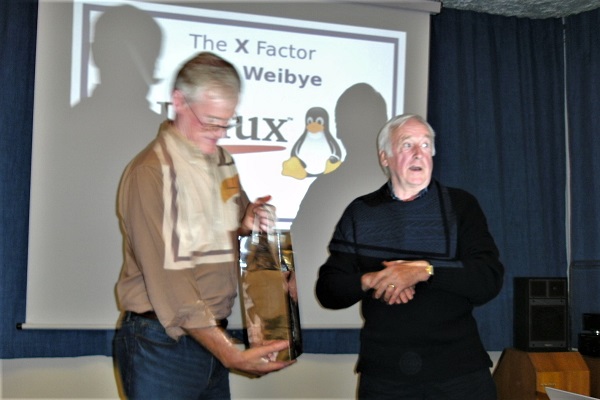
After his well-received talk Karl was thanked and presented with a suitable gift.
=================================================================
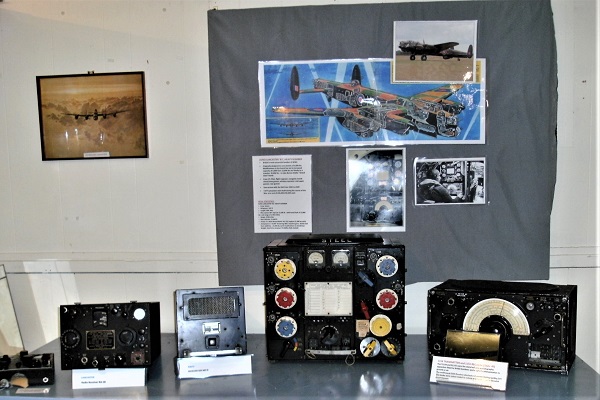
The current MoC exhibition “RADIO – FROM GALLIPOLI TO THE GULF” was available for visiting by all present.
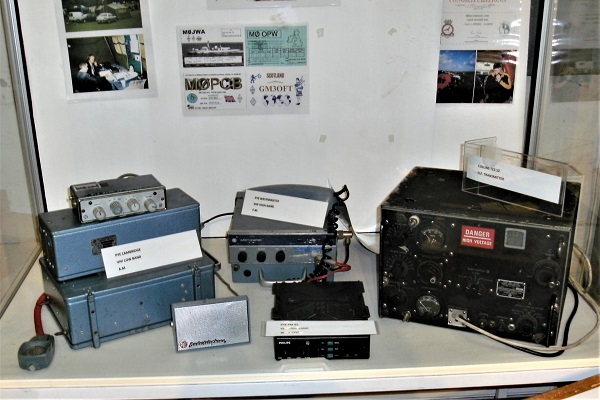
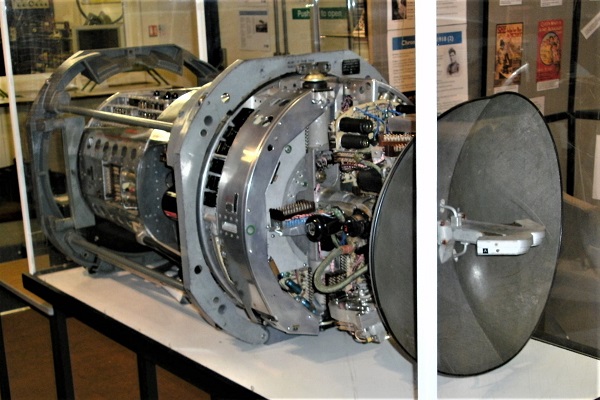
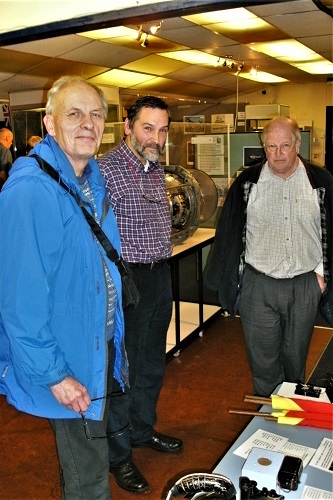
Seven LRS members attended Karl’s talk including Pete GM4BYF, Ian GM8LYQ and Peter GM4DTH.
Also present: Mike MM0MLB, Alan GM3PSP, Mike GM8KCS and Bob GM4CMI.
